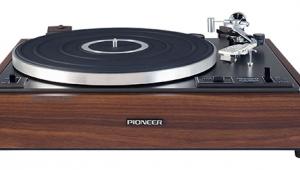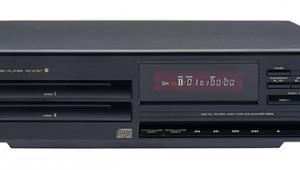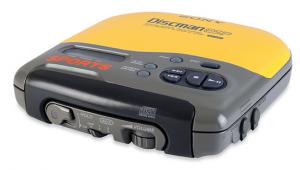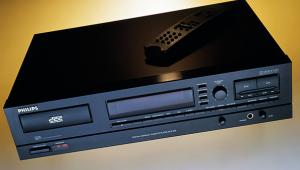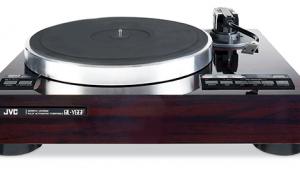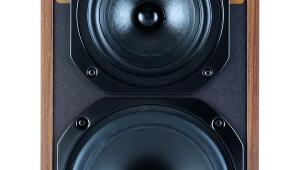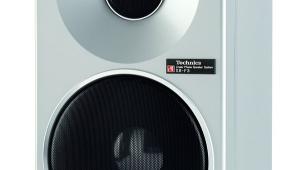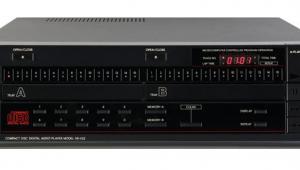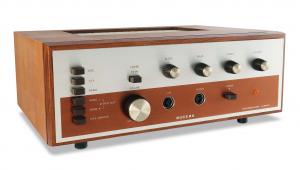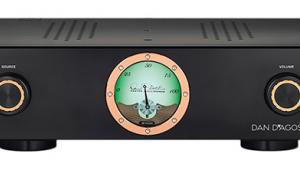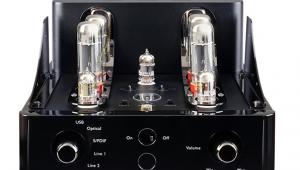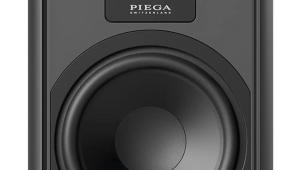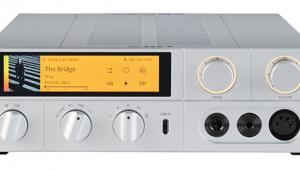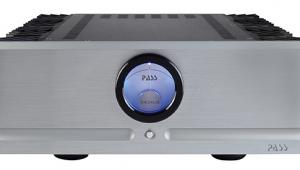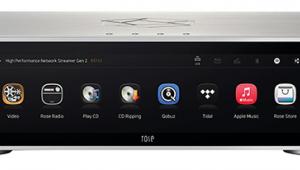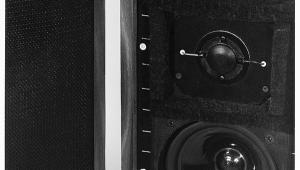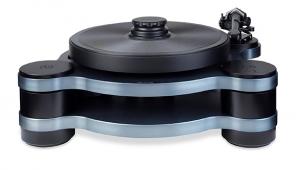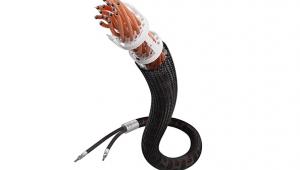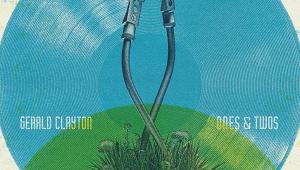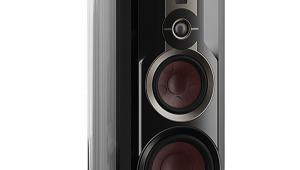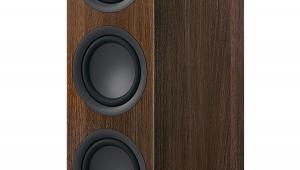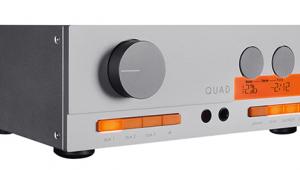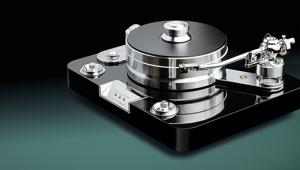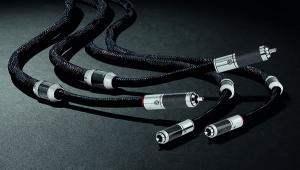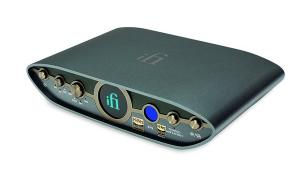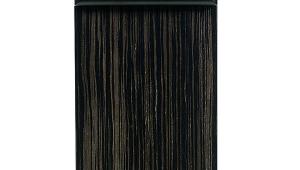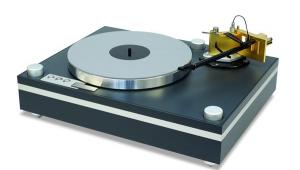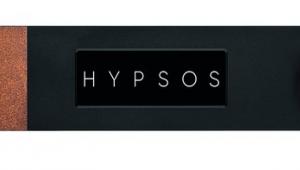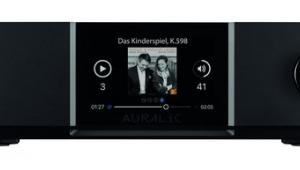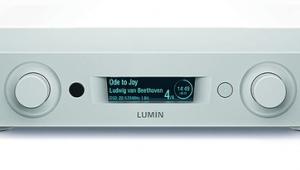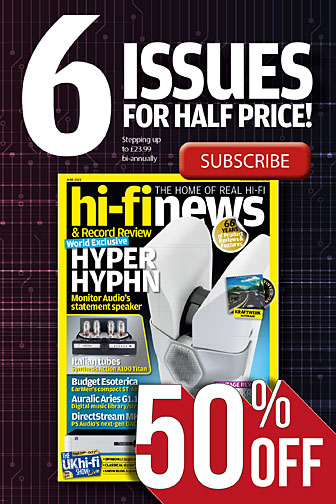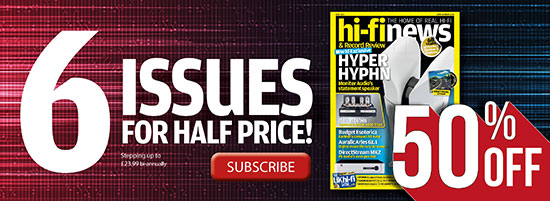Fisher AD-812 CD player


The AD-812 is the perfect CD player for those who dislike banks of buttons and legions of flashing lights. It has only nine controls and the simplest possible display, with no remote control or hidden menus with extra functions concealed within. While it might be marketed today as a stripped-out audiophile product, in 1986 it was simply a no-frills, straightforward player.
The Fisher brand was acquired by Sanyo from Emerson in 1975. Originally associated with pioneering products in its early days, the name had become more consumer-focused under Emerson’s stewardship. Sanyo aimed to reposition Fisher as an upmarket sub-brand, much as Matsushita had done with Technics and Sharp did with Optonica.
Fishing exercise
Sanyo’s previous hi-fi sub-brand was called OTTO (an abbreviation for Optimised Technical Transistorised Operation) but this had little or no resonance in the USA or Europe. Fisher, by contrast, was much more recognisable. Allied with the ubiquitous copperplate ‘Studio Standard’ script, Fisher-branded Sanyo products were popular in the late ’70s and early ’80s. Some advertising of this era hinted that it was still an American company, even though by this stage all Fisher models were entirely Japanese. Other copy suggested that a Fisher system was an aspirational possession and worth making financial sacrifices to own, even though many of the models were quite keenly priced.

The first Fisher CD player was the AD 800 [HFN Apr ’13], a re-badged version of the Sanyo DAD 8. As the technology quickly developed the range was updated with a group of models based on the Sanyo CP 08 [HFN Mar ’23], including the AD-844. The AD-812 of 1986 seen here was built around the next-generation Sanyo chassis and benefitted from simplifications and improvements. One feature that was retained was the novel use of a single motor to operate the loading drawer and laser sled. However, this arrangement had been refined and now used no belts and actuators other than the motor.
Meanwhile, two leaf switches performed all the sensing duties, with all the sequencing and mode shifting tasks being performed by a set of ingeniously designed gears, levers and cams. The user saw nothing of this; other than the slightly mechanical feel of the open/close key for the drawer, all the operations were performed identically to those of a conventionally designed machine.
Chip off the old block
The AD-812’s electronics were more in line with standard mid-1980s Japanese practice. The Sanyo laser unit employed the normal three-beam technique and signal processing was managed by a set of common chips sourced from Sony and Yamaha. This package included Yamaha’s 2x oversampling digital filter, noted in tiny text on the AD-812’s fascia. After this, the Yamaha YM3015 DAC chip was time-shared between the left and right channels, though the use of oversampling limited the high frequency phase errors this technique typically introduces [see PM's Lab Report]. Compared to a player made only a few years previously, the AD-812 looks surprisingly simple. Gone were the multiple boards and hanks of internal wiring as all key parts of the new machine were mounted onto a single PCB.

Functional flair
At first glance the Fisher AD-812 looks similar to many other mid-’80s CD players. At 400mm wide it is slightly narrower than the 430mm standard but still passes for a full-sized machine. The materials used for the fascia and cabinet are functional rather than luxurious, but the Japanese talent of being able to apply exemplary standards of fit and finish to even the simplest of objects is clearly demonstrated here. The control keys are all plated in bright chrome, which helps to break up the expanses of matt black plastic. Closer examination reveals the surprise – there is no time readout, just a track counter that has two large seven-segment digits composed of bright red LEDs.
Next to this is what is labelled as a ‘graphic display’. This consists of two lights that show which repeat mode (1 or all) has been selected, if any. Further to the right, two more lights show if the machine is in play or pause, and this is labelled ‘operation mode’. Beneath this are the absolute minimum of controls. Play, stop, skip forward and skip backwards is all you have. A further button selects the repeat mode, but with no track programming function this is of limited value. Amid such austerity, it’s curious the two most prominent buttons on the panel are dedicated to index search, which is a method for locating a specific section in a long (typically classical) piece of music contained within a single track. This facility requires that additional codes are recorded onto a disc at the time it is manufactured, but since this was rarely implemented, the function is largely redundant.
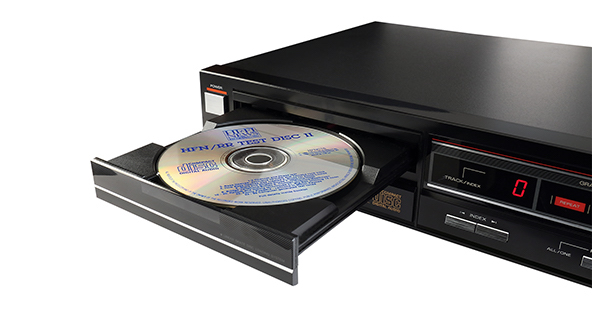
Another strange addition, in view of the pruning away of everything but the utterly essential, is the fitting of a pair of red LEDs above the disc drawer that cast a red line across the disc once it is loaded. Presumably the intention is to make the owner/consumer think that they can see the laser beam without exposing them to the risks of actually doing so. It is harmless enough, but I’d have preferred a few more useful functions instead.
The lack of a time display is also a frustrating omission. Along with this, it is not possible to search within a track, so if you want to hear a short drum solo a couple of minutes into a song or to quickly jump back and listen to a specific phrase again... you can’t. The inclusion of these features only requires changes be made to the software in the machine’s microprocessor and no actual additional physical components, so I find their absence baffling.
Stopped in its tracks
Perhaps to compensate for this, the stop button functions differently to the established norm. In most CD players, pressing stop halts playback and returns the laser pick-up to the beginning of the disc, ready to start from Track 1. In the AD-812 something else happens. Pressing stop makes the disc stop turning and switches off the laser but the sled remains in position. Pressing play again at any time results in playback resuming from that point on the disc, something that can be useful if you enjoy listening to talking books on CD. In contrast, the pause button operates conventionally, keeping the laser active and the disc spinning.
Although the AD-812 is unmistakably a budget player, there is one aspect of its performance that rivals, or even surpasses, that of the most expensive models. This is the speed at which the disc’s table of contents (TOC) is read. It happens almost instantly and seemingly requires only a few rotations of the disc, indicating that the optical and servo performance is first-class. Regular readers may recall that the Crown CD-110 portable player [HFN Sep ’23], another low-cost model, was similarly brisk. Just consider this while you wait for your modern multi-format high-end machine to leisurely complete the same task.
As for setup, the only connections are two standard RCA sockets for left and right audio. There is no facility for an external DAC, headphones, cassette deck synchro record or similar. It couldn’t be simpler...
![]() Tim listens
Tim listens
My experience with early Japanese CD players is that the introduction of digital filtering significantly enhanced performance, even in single-DAC models such as this one. Oversampling halves the lag between the two channels, and the analogue filtering is also simpler, removing another source of phase distortion at high frequencies. The overall effect is improved soundstaging and a sound that is less glassy and brittle. It’s still some way off the benchmark set by the Philips/Marantz models of the era, but even the basic AD-812 comfortably betters the sound quality of first-generation battleships such as the Sony CDP-101 [HFN Jan ’12] or the Pioneer P-D1, for example.
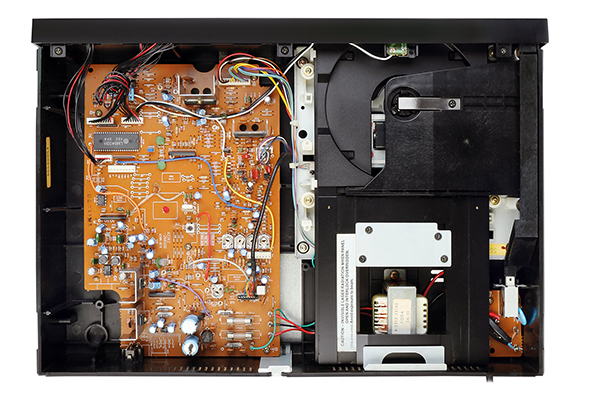
Beethoven’s Piano Concerto No 2 [Philips 422-968-2] showed the AD-812 to be a smooth, easygoing performer. The piano positioned at the centre was well rendered, although the lowest notes lacked the depth and weight achievable with a truly top-class player. The strings, while not wiry or strained, did exhibit a tonal greyness that muted their impact in the context of the orchestra as a whole and this, along with limited bass extension, made for a presentation that I felt to be slightly lacking in energy and drive.
This was, however, countered by an unexpectedly vivid soundstage that gave a good spread of sound in the space between the loudspeakers, not to mention a fair sense of front-to-back depth, which is a good result for a single-DAC design.
Full of poise
By contrast, Tina Turner’s ‘What’s Love Got To Do With It’ [Private Dancer; CDP 7 46041 2] sounded poised and well balanced on the AD-812. The brisk, dry tonality complemented the production perfectly, with nothing in the player’s presentation detracting from the music. Not over-processed, not overblown, just neat and matter of fact. Vocal centre presence could have been sharper, but that’s my only (minor) complaint. The huskiness of Turner’s distinctive vocals was well preserved by the AD-812’s no-nonsense approach, more complex equipment sometimes missing simple aspects of this music.
Punchy pairing
At around this time Fisher had a minor hit with its CA-275 amplifier, which became renowned for providing plenty of ‘punch’ for the money. A little lively, the AD-812 would be the perfect partner with which to tone down a CA-275 and provide the basis for a well-balanced system – provided, that is, you are able to find one that hasn’t been blown up as part of a well-used bedsit PA setup.

When it comes to sound in general, there is little to choose between the Fisher AD-812 and many of its period rivals, but its user interface sets it apart. For me, it is just too basic to be really enjoyable to use. As a regular Philips CD100 user I can forgive the absence of a time display, but no search and track programming is a step too far down the cost-saving road. However, that’s not to say you should reject a clean, working example of this model if you are keen to hear the sound of early CD, especially if you have discs with index marks recorded on them.
Buying secondhandFisher CD players from this era are rare in the UK, making them difficult to find. The Sanyo optical unit is also unavailable, so failure will mean the end of the road for the machine. However, there’s some good news – the mechanism has no belts, eliminating a common failure point, and the electronics use high-quality components that have proven durable.

The player’s main weakness lies in the leaf switches, which can tarnish over time and disrupt mechanical sequences. Cleaning them is simple, but bending the leaves must be avoided, as their exact position is critical. In severe cases, misaligned switches can damage the gears. Originally, the mechanism was heavily greased, but this gradually hardens and hinders the movement of the sled, affecting tracking accuracy. The laser’s angle is adjustable, but unless you have the correct test discs and equipment, it’s best left untouched. Even armed with the proper tools, adjustments are complex, though they rarely require attention once the player has left the factory.
Hi-Fi News Verdict
Though certainly not without its quirks and frustrations, the Fisher AD-812 is a solid, no-frills CD player from the mid-1980s that offers an affordable and hassle-free way to experience the digital sound of that era. While it lacks advanced features, a well-preserved machine will perform reliably, making it a great choice for playing discs from start to finish in a modest second system or vintage set-up.
Sound Quality: 75%

